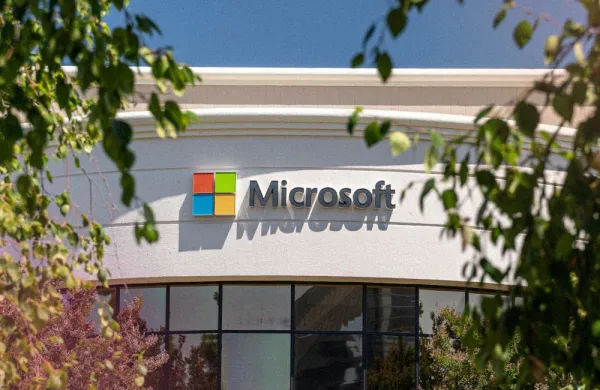It’s clear that ESPN’s financial performance is slipping, as fewer households pay for access to Walt Disney Co.’s sports network — and as the price it pays to carry major events soars.
But it’s not clear how much ESPN’s woes will hurt Disney, which owns 80 percent of the network (Hearst Corp. holds the other 20 percent). Count Richard Greenfield, media analyst at BTIG, is a pessimist. ESPN’s troubles led him to slap a sell rating on Disney stock in December. “ESPN now appears poised to become Disney’s most troubled business, as consumer behavior shifts rapidly,” he writes in a report.
The behavior Greenfield alludes to is cord cutting — TV viewers dropping their cable service entirely to avoid the high fees required to view stations like ESPN — and cord shaving, in which viewers drop some of their channels. In addition, there are cord nevers, mostly young people, who may never buy cable service. More than 50 percent of cable subscribers would opt to drop ESPN to save $8 a month, according to a recent survey by marketing firm CivicScience.
Martin Pyykkonen, senior research analyst at New York–based Rosenblatt Securities, thinks Greenfield doth protest too much; Pyykkonen has a buy rating on Disney shares. ESPN’s subscriber loss, from 100 million households in 2011 to 92 million in 2015, is quite manageable, he says. “Some people are taking a far-out view that ESPN’s imploding. I’m not of that view.”
ESPN can’t do anything about cord nevers, he acknowledges. Still, families whose members have widely different viewing interests won’t find it advantageous to unbundle their cable packages and pay for channels à la carte or in smaller bundles, Pyykkonen maintains. “When you start to re-create 50 percent of your bundle, you aren’t saving a lot.”
Whereas Disney doesn’t break out earnings numbers for ESPN alone, he estimates the sports network generates about 40 percent of Disney’s operating profit. ESPN will charge $7.31 per subscriber per month this year, according to media research firm SNL Kagan. That’s up 10 percent from 2015, compared with an average increase of 8 percent for the prior six years.
Neil Macker, media stock analyst at Morningstar in Chicago, isn’t too worried about ESPN’s subscriber loss, because plenty of sports fans are still willing to pay for its programing. “As the bundle evolves to online or disintegrates, there is still a core audience that watches ESPN,” he says. “There will be a platform that Disney will find to get people to pay.” Currently, viewers can watch ESPN online only if they already pay for it on their TVs.
ESPN would face some obstacles if it seeks a standalone online streaming service. If it creates one, some pay TV providers can kick ESPN off their highest-selling channel packages and sell it à la carte, the Wall Street Journal reported. ESPN would need to charge about $30 a month per customer for a streaming service to equal the money it makes through cable bundling, analysts told the paper, and service providers could undercut ESPN’s price. So it’s no wonder that Disney has shown little interest so far in establishing a streaming channel.
As for programing costs, ESPN paid $4.5 billion for events-rights fees in the fiscal year ended September 30, up 50 percent from just four years earlier, according to research firm MoffettNathanson. ESPN shows NFL football, NBA basketball, college football and basketball and major golf and tennis events.
“Disney management made a fundamental mistake by overpaying for sports rights based on overly aggressive multichannel video subscriber projections,” Greenfield writes. “They also acquired too many sports rights in an effort to prevent new competitors such as Fox Sports 1 and NBC Sports from growing stronger.” Disney’s profit will suffer as a result, he says.
Pyykkonen and Macker are far less concerned about the rights-fee issue. The fees are set for the next several years and already have been absorbed in earnings estimates, Pyykkonen says. In the latest major-sporting-event increase, ESPN’s payment for broadcasting the NBA soared to $1.47 billion a year for this season and the next eight, up from $485 million a year previously.
Pyykkonen doesn’t deny that ESPN confronts some major issues. Profit margins have peaked in the low-40s percentage range, he says. “ESPN can’t grow subscribers. It’s maxed out in the U.S.” And it will be difficult for ESPN to gain much viewership in Europe and Asia, because it doesn’t have rights to premier programing there. “But ESPN is solid; its fees are locked in,” Pyykkonen says. He estimates that its revenue is growing 5 to 10 percent a year.
Meanwhile, the areas of Disney that account for the other 60 percent of operating profit — mainly, theme parks, the film studio and consumer product merchandising (read: the Star Wars franchise) — are doing quite well, Pyykkonen says.
As for ESPN, its growth may well have peaked, and its future strength likely depends on how it adjusts to the changing landscape of TV viewership.
Get more on corporations.






